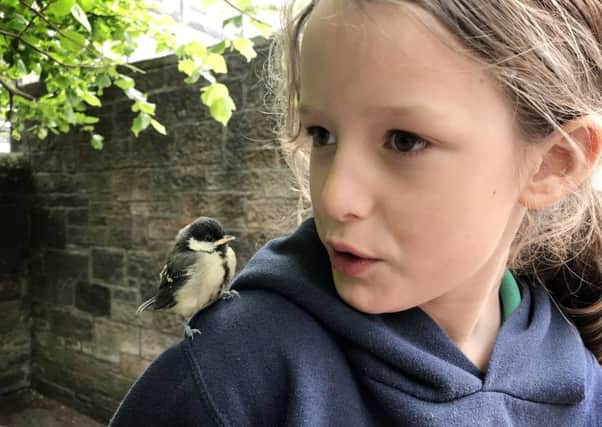Ilona Amos: Do yourself and nature a favour with a walk on the wild side


Flapping and hopping about on the busy pavement, it appeared distressed and unable to fly. We thought it might be injured.
So, concerned that it might get trampled or end up as lunch for a passing dog, we carefully captured it and carried it back home. There, we watched it for a bit and checked for any obvious signs of damage. It was a feisty wee critter and seemed quite strong so we took it out to our back garden and let it hop into bush, free again.
Advertisement
Hide AdAdvertisement
Hide AdHowever, despite our good intentions, I soon discovered this was the wrong thing to do. Apparently young garden birds spend a few days on the ground after leaving the nest, unable to fly properly until their flight feathers finish growing. Advice from the RSPB says we should not try “rescuing” these fledglings, as their parents are likely to be nearby and will be providing food. Oops. Cue, visions of the wee soul enduring a slow agonising death.
Luckily our little friend was still perched where we had left it, chirping loudly – for its mum and dad presumably. We felt terrible.
So we scooped it up and rushed back to the spot of our first encounter, where we released it into a nearby tree. Sure enough, it wasn’t long before we could hear its calls answered. Soon afterwards one of the parents swooped down and the family was reunited. We were all hugely relieved and quite elated – us humans anyway.
Numerous studies have demonstrated that nature is good for us. Exposure to the sights and sounds of plants, animals, water and green spaces has been shown to have long-lasting positive effects on health and well-being, both physical and mental, improving happiness levels and reducing stress and anxiety.
We should need no further encouragement to take part in a month-long campaign by the Wildlife Trusts. Known as 30 Days Wild, it’s intended to be a bit of fun that can be enjoyed by everyone. So far around 30,000 people have signed up to take part throughout June.
Suggestions include watching wildlife on a webcam during your lunch break, turning off your phone and taking in the sights and sounds of nature, walking barefoot through a meadow, stopping to take in the scent of wild flowers or even just watching the sun going down. The more adventurous can explore a new wild place or perhaps climb a tree.
Now in its third year, the challenge has already proved its success. Academics from Derby studied the impact of the initiative, with those who did something wild each day saying they felt happier, healthier and more connected to nature. Analysis found the biggest positive effects were on younger adults and folk who didn’t class themselves as nature-lovers.
Better still, the benefits are not just one-way. Scientists say people who are engaged with their environment are more likely to adopt eco-friendly activities and help safeguard nature.
Advertisement
Hide AdAdvertisement
Hide AdMummy’s Little Precious certainly benefitted from our recent avian encounter, which was made all the more special when the little bird fluttered out of its tree and came back to her after being freed. She felt a special bond had been formed, and insisted we return later to check it hadn’t come to any grief in our absence.
It doesn’t cost anything to commit your own random acts of wildness and you can spend as little or as much time as you like communing with nature. Every little helps. Sign up on the Scottish Wildlife Trust website or download the special app for ideas to inspire your 30 days – and beyond. Go on, take a walk on the wild side.